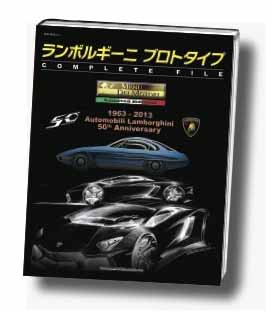Memorable Japanese Motorcycles

Updated from its previous format to include the later 3.2 Litre models through 1989. This Floyd Clymer publication includes complete technical data, service and maintenance information and comprehensive detailed instructions for the repair and overhaul of all major and minor mechanical and electrical components for the 1973 to 1989 Porsche 911G Series, 2.7, 3.0 and the 3.2 Litre models.
In its original format, this manual covered the Porsche 911 models through the 1978 model year. However, additional information for the earlier 2.7 and 3.0 Litre models that was not available at the time the original manual was published, is now included or appended to each chapter in this revised publication.
While this manual focuses on the 1973-1989 G series 911, much of the information is also applicable to the earlier 2.4 Litre (1971-73) models destined for the U.S.A., Australia, Japan and Canada that, due to emission requirements, were fitted with Bosch mechanical fuel injection (FIP). Consequently, this manual will also be of interest to owners of those 2.4 litre fuel injected models.
The manual is broken down into the following sections: Engine, Fuel System including Bosch mechanical fuel injection (FIP) continuous injection (CIS) and digital fuel injection (DME). Ignition Systems including Capacitive Discharge CDS, CDI and DME, Cooling, Heating & Exhaust Emission Systems, Clutch, Manual Transmission & Sportomatic Transmission, Rear Suspension & Drive Axles, Front Suspension, Steering, Brakes, Electrical System and Body. There is also an appendix to the rear of the manual that includes Technical Specifications and Wiring Diagrams.
While reprints of the factory manual are readily available, they are relatively expensive and we are pleased to be able to offer this reasonably priced alternative as a service to all 1973-1989 Porsche 911 enthusiasts worldwide.
248 pages, 311 illustrations plus an additional 66 pages of wiring diagrams, size 8.25 x 10.75 inches
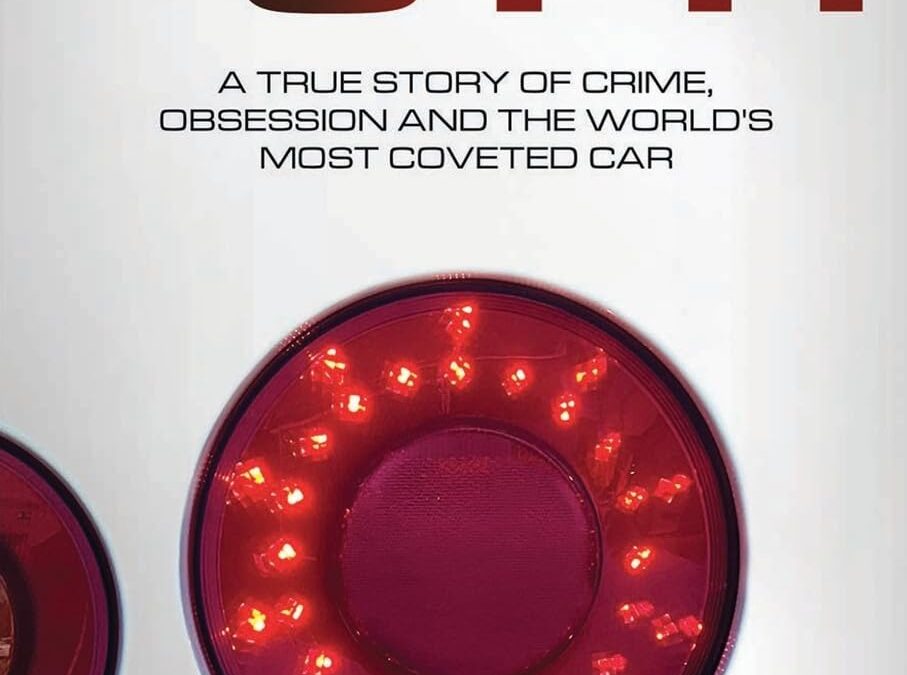
Quick – which car has the most cultish following? Nope, not the Italian supercars that ooze speed and millionaire status, or the German sedans with their bruising horsepower and rich interior leathers. Instead, it’s a Nissan. This is the true story of a giant-killer: the Nissan Skyline GT-R, a car that could only have come from Japan. Its sleek silhouette and delicate balance joined a powerhouse engine and clever technology, capable of smoking high-priced rivals. The Nissan Skyline GT-R dominated on the track and bred outlaw culture on the road. Video games and films spread the word globally. But the GT-R was made for Japan. In the US, strict import laws meant that if caught, GT-R owners risked the threat of watching helplessly as their car was hauled off to the crusher. Now the law is nearly expired. Some collectors eagerly await their dream car, while others face prison time. All for the cult of GT-R.

Lightning Strikes—The Lockheed P-38 tells the full story of one of the most successful and versatile aircraft of the Second World War. The P-38 (including its F-4 and F-5 photo reconnaissance models) eventually served with all the USAAF’s numbered overseas air forces, from early 1942 to VJ Day. The book describes the Lightning’s design and its technical details as it gradually evolved and improved, from the original XP-38 to its final variant, the P-38L-5. The main focus is on its service in the combat theaters, from the frigid, windswept Aleutian Islands in the North Pacific to the steaming jungles of the South Pacific and Southeast Asia, the burning sands of North Africa and the more temperate climes of Europe. All the units that flew the Lightning are included, as are the experiences of many of their pilots and ground crewmen as they fought the Japanese Empire and the European Axis. Also related are the P-38’s service with foreign (non-U.S.) air forces, its postwar commercial utilization as civilian aircraft and the surviving examples in museums around the world. The book is extremely well illustrated with nearly 400 high-resolution photographs, artworks, and graphics, and is supplemented by detailed appendices.
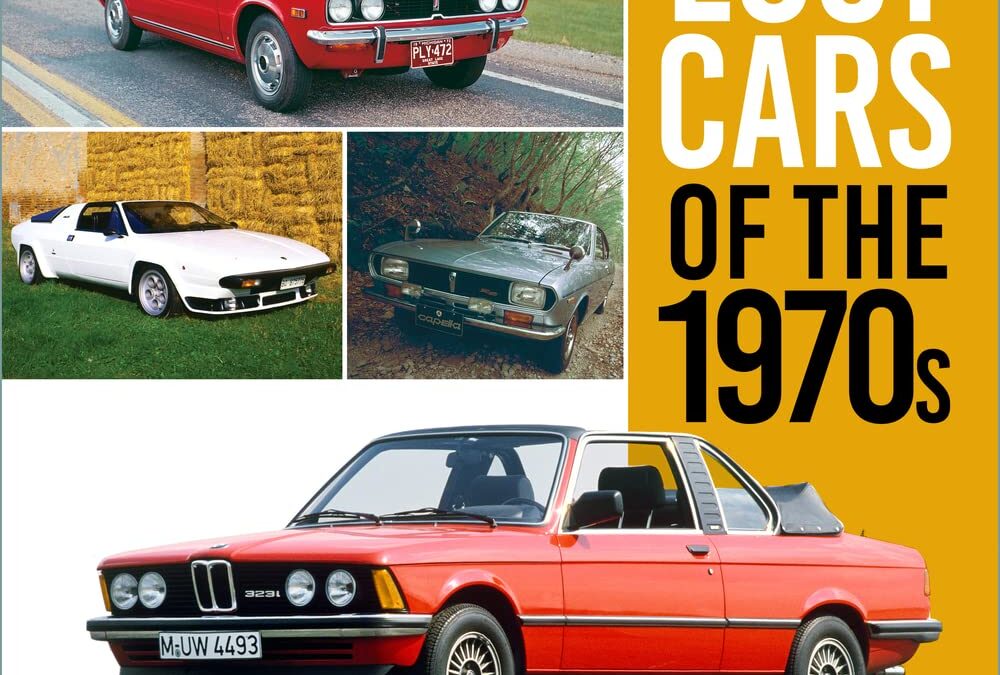
Sixty diverse cars, sixty fascinating stories, sixty contrasting specifications, just one uniting factor: they’re all forgotten, neglected or misunderstood classics.
The casualties and sideshows of motoring history from around the world finally get the recognition they deserve. Revisit a motoring decade when fuel economy was top priority, the rotary engine rose and fell, and car-buyers wanted a hatchback and the latest styling and safety features. Those that made the grade found global popularity – now meet the cars left behind.
Italy’s clever plan to update the Mini; the French GT coupé with an extra seat; America’s electric runabout that paved the way for Tesla; Britain’s stylish, homespun sports cars; the Japanese limo meant to do 25mph; the ‘safety car’ turned into a Polish workhorse… each one enjoys a detailed review giving the context and thinking around them.
The terrific archive images also highlight thirty 1970s design specials and one-offs – even more amazing cars pointing to a future that never quite came true.
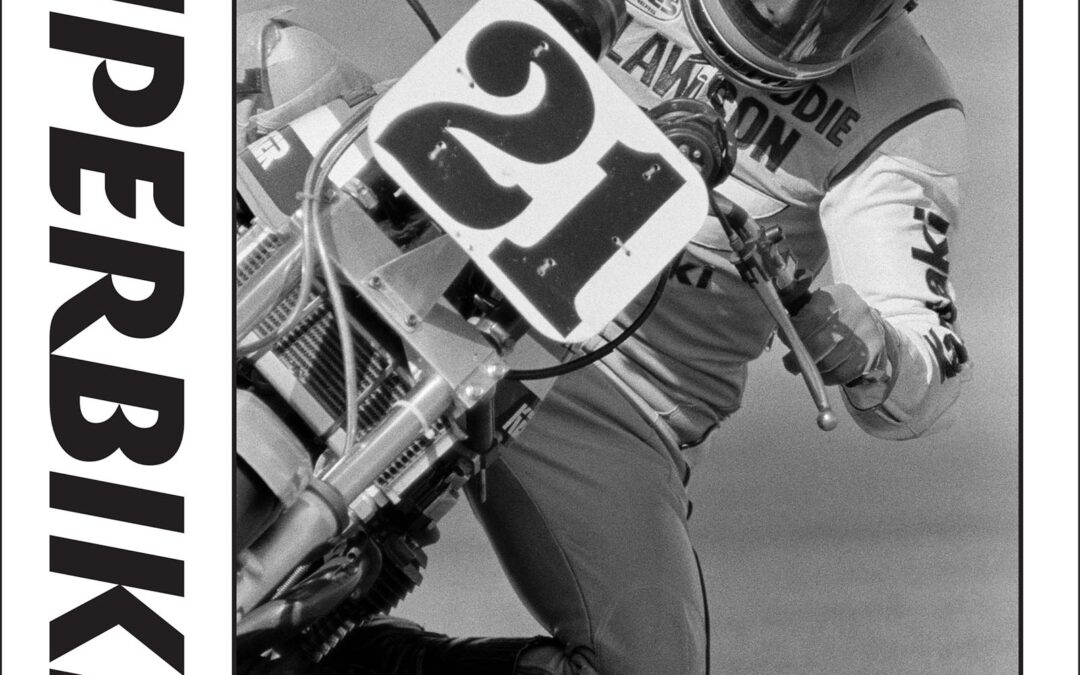
Superbike racing is a global business built on decades of dedicated partnerships among manufacturers, promoters and teams resulting in successful domestic and international championships. In the mid-1970s, however, this popular category of production-based four-stroke competition was in its infancy.
In “Superbike: An Illustrated Early History,” renowned technical writer Kevin Cameron and
acclaimed photographer John Owens chronicle the transition from the twin-cylinder BMWs,
Ducatis and Moto Guzzis set against wobbling and weaving first-generation Japanese fours to a
second wave of more raceworthy machines that ultimately led to the sportbike revolution.
Owens shot the black-and-white photographs published in this beautifully designed and
produced 192-page hardcover book at five of the tracks that dotted the U.S. motorcycle
road-racing landscape at the time: Daytona International Speedway, Bryar Motorsports Park,
Laguna Seca Raceway, Pocono International Raceway and Road America.
Eddie Lawson, Wayne Rainey and Freddie Spencer—three Americans who went on to win a
combined 10 250cc and 500cc Grand Prix world titles—figured prominently in the “sit-up” era of
AMA Superbike. Throughout the book, Cameron and Owens provide insights and images of
riders, crew members and machines difficult to replicate in today’s veiled paddocks.
“The desire to go fast, brake, turn and accelerate isn’t that complicated,” Cameron writes in the
opening pages. Yet this book clearly illustrates and uniquely explains the challenges that all
involved—from the manufacturers, to the teams and, ultimately, to the riders—faced in their
attempts to achieve those goals.
ABOUT THE AUTHORS
Kevin Cameron is a former tuner specializing in racing two-strokes and is widely recognized for
his ability to reduce deeply technical subjects to their elemental form. Kevin has written for
numerous publications. He has also authored several books on engineering and performance.
John Owens has photographed automotive and motorcycle competitions since 1975. John has
covered a range of events in the U.S., Europe and Japan, including the 24 Hours of Le Mans,
Indianapolis 500 and Daytona 500, as well as the Isle of Man Tourist Trophy races.

With his hugely successful commercial aircraft, including the legendary DC-3, founder Donald W. Douglas led his company to the forefront of aircraft manufacturers starting in the 1930s. “Depend on Douglas” was the company motto, and the company founder stood behind it with his name. Between 1945 and 1960, the DC-4, DC-6, and DC-7 four-engine “Big Prop” models were flown by many of the world’s most famous commercial airlines of the era, including Pan Am, United, American, Eastern, Delta, KLM, BOAC, Swissair, SAS, Air France, Alitalia, and Japan Air Lines. This is the history of the design, development, and operational use of the Douglas Big Props, including technical specifications and details of military variants. Period photographs bring to life the fascinating history of these early, and influential, commercial airliners, some of which still fly today.

The 90th edition of the legendary 24 Hours of Le Mans was distinguished above all by the fact that, after a two-year break, spectators were finally able to take part in the spectacle again in large numbers. The appreciative audience witnessed the duel between the Toyota GR010 Hybrid. After number 7 in 2021, number 8 was given the honour of giving the Japanese manufacturer its fifth victory at the Sarthe. Ryo Hirakawa won on his first appearance, while it was the third success of Brendon Hartley and, most importantly, the fourth of Sébastien Buemi, who has now matched the great Henri Pescarolo, Olivier Gendebien and Yannick Dalmas.
Jim Glickenhaus is to thank for another achievement this year. The American, who was fourth in his first appearance last year, has claimed the podium he always dreamed of. In the LMP2 class, it was Jota who put two cars on the podium in a very competitive class. The official Porsche 911 RSR-19 of Frédéric Makowiecki, Richard Lietz and Gianmaria Bruni will go down in history as the last winner of the GTE-Pro class so loved by the fans, but it was the last appearance at the 24 Hours of Le Mans. The Aston Martin TF Sport had to beat Porsche to triumph in the GTE-Am class. In this yearbook, you will find hundreds of carefully selected photos and everything you need to know about the participants, rules and background of the 24 Hours of Le Mans in 2022.
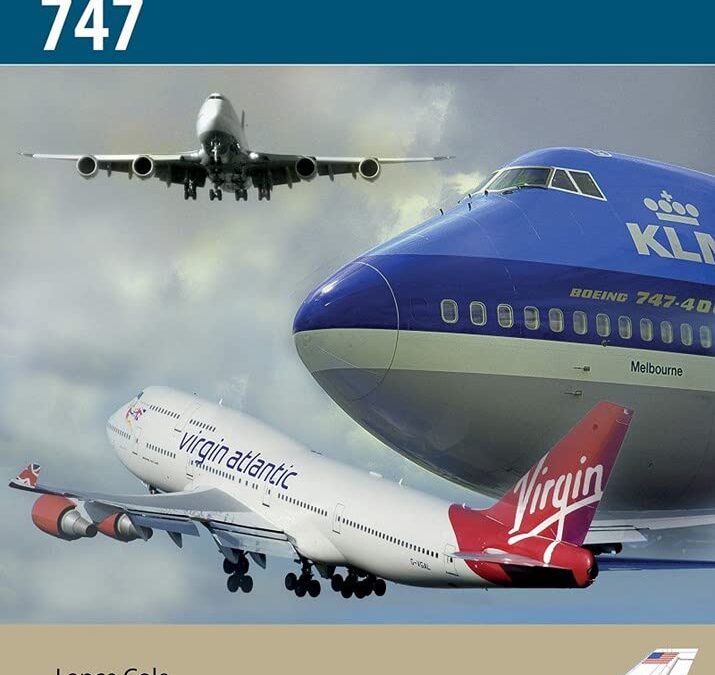
Boeing’s 747 ‘heavy’ has achieved a fifty-year reign of the airways, but now airlines are retiring their fleets as a different type of long-haul airliner emerges. Yet the ultimate development of the 747, the -800 model, will ply the airways for many years to come.
Even as twin-engine airliners increasingly dominate long-haul operations and the story of the four-engine Airbus A380 slows, the world is still a different place thanks to the great gamble that Boeing took with its 747. From early, difficult days designing and proving the world’s biggest-ever airliner, the 747 has grown into a 400-ton leviathan capable of encircling the world. Boeing took a massive billion-dollar gamble and won.
Taking its maiden flight in February 1969, designing and building the 747 was a huge challenge and involved new fields of aerospace technology. Multiple fail-safe systems were designed, and problems developing the engines put the whole programme at risk. Yet the issues were solved and the 747 flew like a dream said pilots – belying its size and sheer scale.
With its distinctive hump and an extended upper-deck allied to airframe, avionics and engine developments, 747 became both a blue-riband airliner and, a mass-economy class travel device. Fitted with ultra-efficient Rolls-Royce engines, 747s became long-haul champions all over the world, notably on Pacific routes. across the Atlantic in January 1970, 747 became the must-have, four-engine, long haul airframe. Japan Airlines, for example, operated over sixty 747s in the world’s biggest 747 fleet.
By the renowned aviation author Lance Cole, this book provides a detailed yet engaging commentary on the design engineering and operating life and times of civil aviation’s greatest sub-sonic achievement.

The ability of the United States Navy to fight and win a protracted war in the Pacific was not solely the result of technology, tactics, or leadership. Naval aviation maintenance played a major role in the U.S. victory over Japan in the second World War. The naval war against Japan did not achieve sustained success until enough aircraft technicians were available to support the high tempo of aviation operations that fast carrier task force doctrine demanded. When the United States realized war was imminent and ordered a drastic increase in the size of its aviation fleet, the Navy was forced to reconsider its earlier practices and develop new policies in maintenance, supply, and technical training. Not only did a shortage of technicians plague the Navy, but the scarcity of aviation supply and repair facilities in the Pacific soon caused panic in Washington. While the surface Navy’s modernization of at-sea replenishment was beneficial, it did not solve the problems of sustaining war-time aircraft readiness levels sufficient to a winning a naval air war. Fisher outlines the drastic institutional changes that accompanied an increase in aviation maintenance personnel from fewer than 10,000 to nearly 250,000 bluejackets, the complete restructuring of the naval aviation technical educational system, and the development of a highly skilled labor force. The first comprehensive study on the importance of aircraft maintenance and the aircraft technician in the age of the aircraft carrier, Sustaining the Carrier War, provides the missing link to our understanding of Great Power conflict at sea.
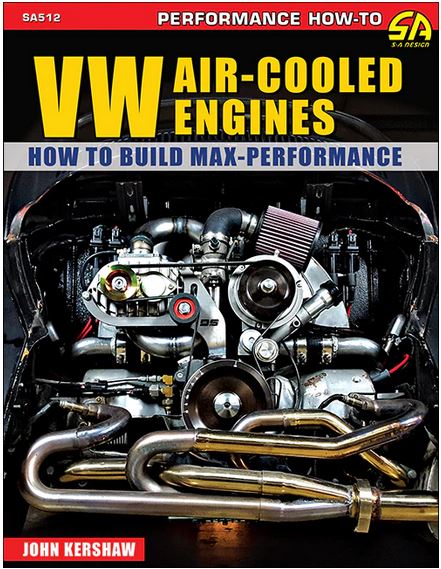
The VW Beetle (officially the Volkswagen Type 1) needs no introduction. Manufactured and marketed globally by Volkswagen from 1938 to 2003, more than 21 million were produced and sold around the world. Extremely popular in the US and Europe during the 1950s and 1960s, increasing competition from Japanese, American, and European manufacturers as well as stiffening demands for better safety and emissions contributed to a sharp decline in sales in the early 1970s. The Beetle was manufactured in much smaller numbers in Germany until the late 1970s, when production shifted to Brazil and Mexico, where operating cost was a was a large factor in keeping the Beetle alive. While simple and fun, the Beetle had simply become outdated.
Of course, the enthusiast market did not see it that way. Aficionados loved the simplicity in the design as well as its aesthetics and enjoyed tinkering with the mechanicals of their Beetles, Buses, Type 3 models and Karmann Ghias. There is no shortage of options when customizing your Beetle, and for many, extracting as much performance out of their air-cooled flat 4 was the way to go. Not only does it remedy the issue of keeping up with modern traffic but Beetles also respond really well to modifications and have a robust aftermarket to support them.
In VW Air-Cooled Engines: How to Build Max Performance, VW veteran Dr. John F. Kershaw lays the groundwork for getting the most possible power for your desired use and application. Covered here are all the various power levels and components to get you there. It’s all here: rotating assemblies, cylinder heads, cams and the valvetrain, engine blocks, ignitions systems, fuel injection, carburetors and induction, exhaust, sources for parts, and even turbos and superchargers.
Are you looking for just a little more power to keep up with traffic or maybe a streetable high-performance machine? Perhaps you are interested in a little street/strip action or even all-out racing applications. All of your options are examined in this book. Add it to your air-cooled library today.
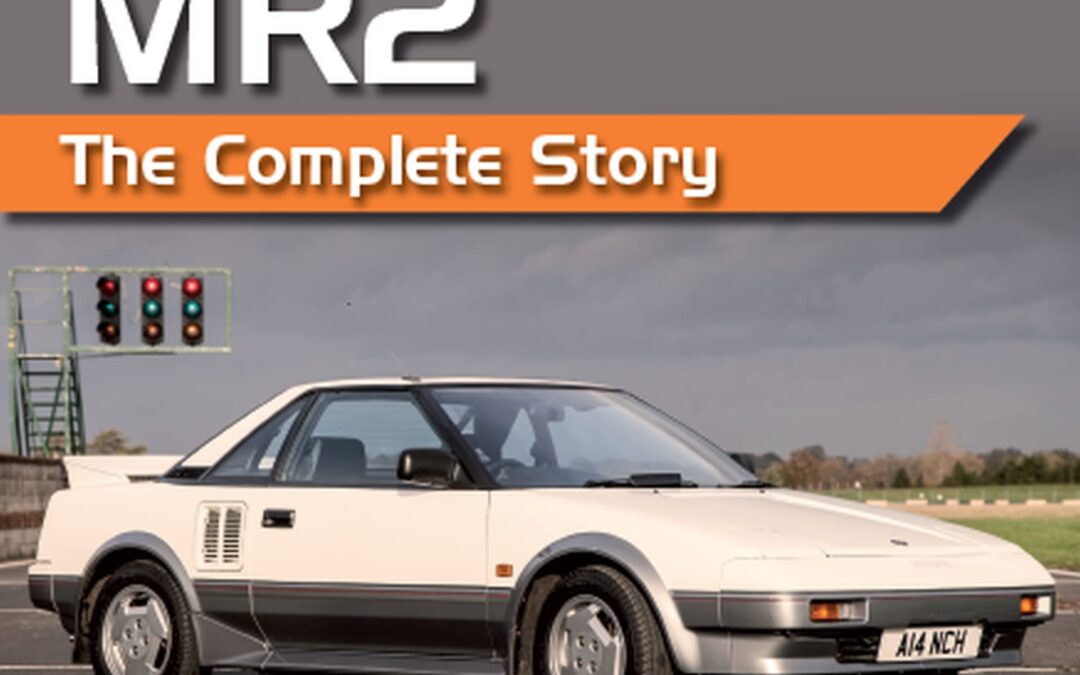
Toyota MR2 – The Complete Story tells of the trials and tribulations the team faced bring the MR2 to market, how global events almost conspired to force Toyota to cancel the project and how it survived against all odds to become one of the company’s best-loved cars. This new paperback edition for 2022 covers all three generations of models: the first-generation AW11 – Car of the Year Japan, 1984-1985; second-generation SW20, with a new 2,0 litre 3S-GTE engine, and the third-generation ZZW30/MR2 Roadster. The MR2 in motorsport and special editions and Zagato’s VM180 are also covered. With detailed specification guides, archive photos and beautiful new photography, this book is the definite dossier of a true Japanase classic and is a must for every MR2 owner and sports car enthusiast.

Satisfy your dream collector-car desires with this one-stop reference for starting or expanding your collection beyond traditional classics and muscle cars.
Focusing on the interests and needs of Generation X and Millennial car collectors, The NextGen Guide to Car Collecting offers a concise history of car collecting to present day, guidance on car buying and living the car-collector life, and an overview of collector cars with a focus on cars built from the 1970s through the 1990s while also touching on more contemporary cars. Chapters highlight Japanese, American, and European cars, particularly those models that have experienced the greatest growth in collector interest over the past decade.
The NextGen Guide to Car Collecting explores the many ways the Internet and social media have changed the classic car marketplace. You’ll learn how to buy a classic car online without suffering buyer’s remorse, as well as the four critical keys to a happy collector-vehicle relationship: 1) possessing discretionary cash for the initial purchase; 2) obtaining a thorough knowledge of the car and its ownership; 3) the critical pre-purchase inspection; and 4) access to a work space.
You’ll also find out why the popularity of late twentieth-century specialty cars will continue to grow (think increasing electronic complication and the still-large number of enthusiasts for whom “self-driving” means driving themselves) and explore the attributes that makes these cars desirable collector vehicles.
In addition, the book looks at the significant increases in quality and reliability of post-1970s machines and how that impacts their collectibility. Finally, learn why expectations that your newfound classic could outlast our current crop of lithium-ion-dependent electric cars may not be unrealistic: recent developments like ride-hailing and sharing services; expanded public transit; rental bikes and scooters; and garage condos and other storage options could actually extend the life of your “new” classic permitting you to truly tailor the use of your classics.
Whether your collection requires a one-stall garage or a pole barn, the practical, useful information and keen perspective of The NextGen Guide to Car Collecting will ensure you pull this volume from your shelf time and again.
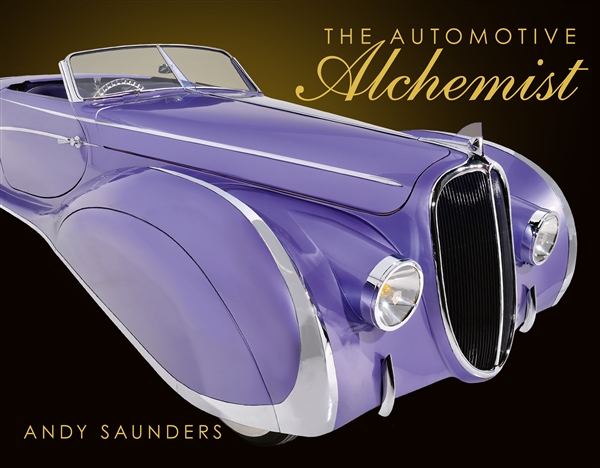
Andy Saunders’ ‘Automotive Alchemist ’ is a roller-coaster ride through the highs and lows of this charismatic man’s life. From the early years of learning the basic skills of cutting and shaping metal then painting and airbrushing, to his mature creations, restorations and the inherent genius of his designs. Andy welcomes us into his workshop and his head: not afraid to express his emotions, as he deconstructs and then rebuilds each vehicle, he lays bare his motivations, inspirations, influences, and passions. Intertwined in the narrative is the work involved in the creation of 60 cars, described here with many detailed photographs.
Forty-two of Andy’s creations now reside in museums and private collections across the globe but the most unusual fate is that of Flat Out, the Guinness Book of Records acclaimed Lowest Car in the World, which is now a coffee table in the foyer of a huge Californian corporation.
The book is not a technical ‘how to create wild custom cars’ manual. Rather it is a celebration of Andy’s joy of creation and his design genius, though tempered by personal traumas and losses. He has, on many occasions, been referred to as the British George Barris, the American “King of Kustomizers.” Unlike many biographies, this book engages the reader with its honesty and humour.
Andy Saunders grew up in Poole on the south coast of England and developed an early relationship with the building and customising of cars. His first project was finished before he was old enough to hold a British driving license.
Since that first project, his journey to become Britain’s leading and most recognisable ‘Car Artist’ has evolved. With his painstaking attention to detail and his knowledge of the styling masters from bygone eras, his creations have always been unique and, occasionally, controversial.
Never shy of turning his ideas into reality or taking unexpected opportunities to fruition, Andy has, on occasions, thrown away the accepted rule book and created some truly amazing vehicles: making a Citroën CX into a road-legal alien craft; turning Ford’s 1958 X-2000 ‘car of the future’ model into a full-sized reality and creating a Cord coupe that the factory would have been proud to call their own.
Andy has three Guinness Book of Records certifications: twice for the ‘lowest car in the world’ and once for the ‘lowest van in the world’ which remains unbeaten and has been approached by film companies and undertaken commissions for major car manufacturers. But mostly he builds whatever has inspired his creative juices from lowriders, Incantation, to shortened Minis, Mini Ha Ha; from restyling a Bentley Mulsanne, which was acclaimed by the Rolls-Royce and Bentley Owners Club as “the most beautiful coachbuilt Bentley to have been built since WWII”, to a 2CV inspired by Picasso – Picasso’s Citroën; and from his drivable version of Bertone’s Lancia Stratos Zero to his Art Deco creation of a rare 1939 Peugeot, Metropolis, inspired by Fritz Lang’s 1927 masterpiece of the same name.
During the past four decades Andy has restored Cord, Pontiac and Rolls Royce vehicles. Rescued and restored the unique and much-maligned 1957 Aurora Safety Sedan and realised an affinity with the great designer Alex Tremulis. Andy’s creations have appeared in exhibitions, on television and in magazines as far afield as Australia, Korea, America, the UK and Europe and many of his vehicles nowadays reside in museums and collections from California to Japan and from Europe to the Middle East.
And so to his latest masterpiece, Déjà: inspired by a 1930’s popular French girls name, some body panels he didn’t want or need and the pinnacle of French coachbuilding, Andy has created this Delahaye, a hand-built steel roadster. This beautiful cross between Joseph Figoni’s 165s and Jacques Saoutchik’s 175 somehow appears to be some eighty-five years late for her debut at the Paris Salon de l’Automobile.
- 464 pages
- Hard cover with dust jacket

An intimate insight into a racing life
Mike Hailwood is a legend. Arguably the world’s greatest ever motorcycle racer, he transcended eras and generations. His two-wheeled racing career began – and he initially made his name – aboard big, British single cylinder machines, then he took to Japanese and Italian four-stroke multis, before finishing on booming V-twins and two-strokes.
He went from the black-and-white era, from one-colour dark leathers and pudding basin crash helmets, to the multicoloured, full-face helmeted, sponsorship driven days of the late 1970s. He found time to do some car racing too, recording a third at Le Mans in 1969 driving a Ford GT40, winning the 1972 Formula 2 European Championship and competing in 50 F1 Grands Prix, his debut in 1963, his last in 1974.
Though the car stats are impressive, the motorcycle ones are astonishing – nine world championships, 76 GP wins, 14 TT victories, his TT victories separated by 18 years, the first 1961, the last 1979. On top of this he was awarded the MBE and then the George Medal for his bravery in rescuing fellow F1 driver Clay Regazzoni in 1973.
It is almost impossible to comprehend the tragic irony that the life of this man, who had risked and survived so much, a hero to thousands for his derring-do, was curtailed as he drove the family car to collect a fish and chip takeaway. That his daughter Michelle died alongside him adds an extra layer to the tragedy.
Mike’s son David survived the accident and here has allowed access to the family’s treasure trove of personal artefacts. These range from the mundane to the magnificent but together they tell the incredible story of Mike the Bike.
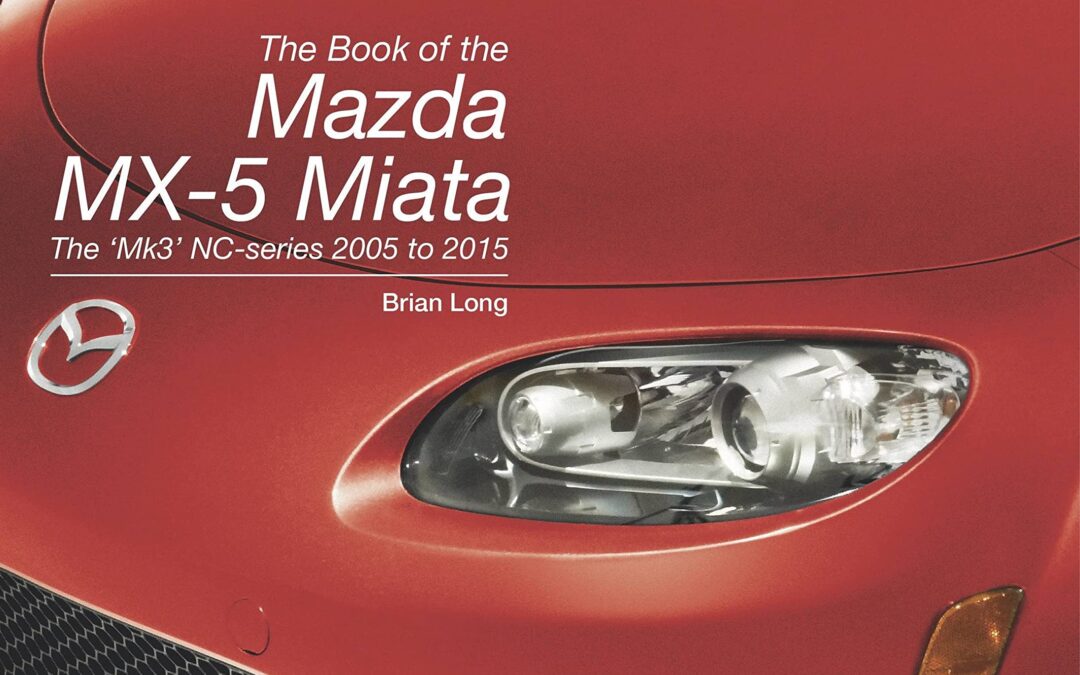
Researched and written in Japan with the full co-operation of the factory, The Book of the Mazda MX-5 Miata is the story of the third generation of Mazda’s MX-5 – a car that re-invented the affordable lightweight convertible, a breed that many thought was extinct as the 1990s drew near.
Successful immediately, the MX-5 (also known as the Miata, or Roadster) spawned many imitators, but remains the world’s best selling sports car of all time. The series has now been in production for more than 30 years, with new generations following the concept of the original, much to the delight of fans around the globe.
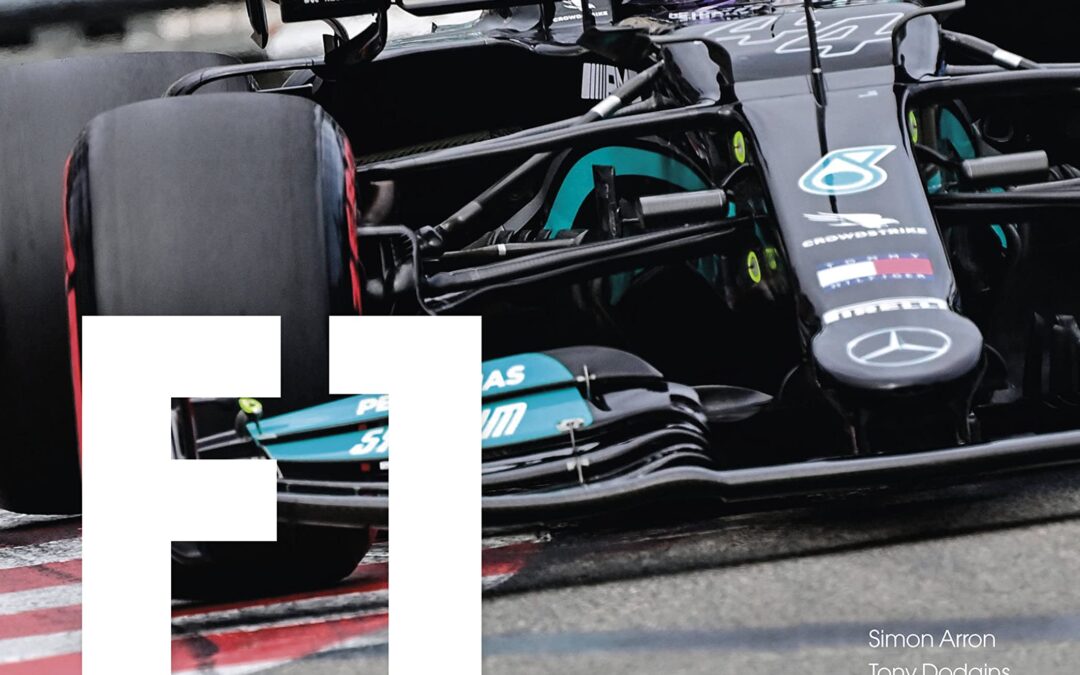
As Lewis Hamilton, Max Verstappen and Charles Leclerc battle it out head-to-head in the most hotly contested championship in years, this in-depth book, with a foreword from Haas team principal Guenther Steiner, tells the story of how the sport evolved into the exhilarating high octane spectacle it is today.
The new rules introduced in 2022 signal the greatest change to F1 in a generation, cracking the field wide open and seeing some of the most compelling and competitive races in the last 25 years.
Technical changes aimed at levelling the playing field for the teams combined with the sport’s tightening budget cap have made the races closer than ever. There will be more sprint races – trialed in 2021 – and greater fan interest driven by Netflix’s hugely successful ‘Drive to Survive’ series.
So, how did we get here? How did F1 become the acknowledged ‘Pinnacle of Motorsport’? Simon Arron and Tony Dodgins have identified the 100 most significant changes to the series since its inception in 1950. Formula One is unrecognizable from its debut season, where drivers raced around on old bomber training aerodrome in Northamptonshire with oil drums to mark the corners and straw bales the only concession to safety.
New fans will welcome a complete and highly illustrated guide to the history of F1, while older fans will be able to compare their own views of what were the pivotal moments of change, in a book written by experienced motoring writers with two lifetimes worth of knowledge of the sport.
The book will link technical progress with the personalities involved, indeed many of the swiftest changes have come about as a result of accidents or tragedies – the death of Roland Ratzenberger at Imola in 1994, the same weekend as Ayrton Senna, could have been avoided by the HANS safety device. The introduction of the halo saved Romain Grosjean’s life in Bahrain last year, but only came about because of the tragic accident that claimed Jules Bianchi in Japan.
Along with changes to circuits and the technology of the cars, this book highlights the commercial changes and the controversies that threatened to split the sport apart – such as the threat of breakaway series proposed at various times by teams.
A must-read for completists or for those new to the sport, F1: The Pinnacle is a fascinating insight into one of the most exciting and dangerous sports in the world.


